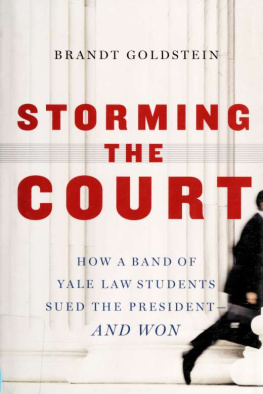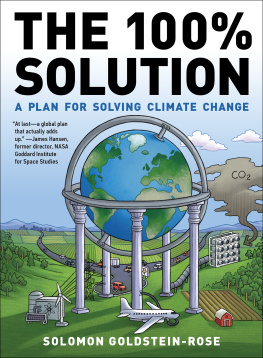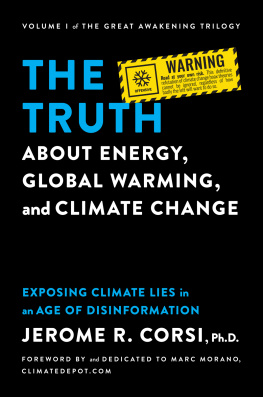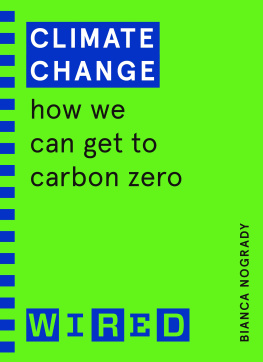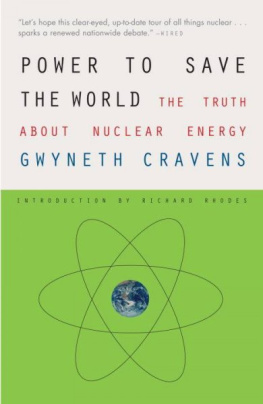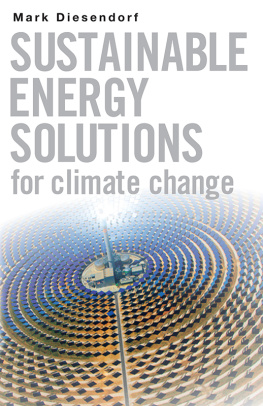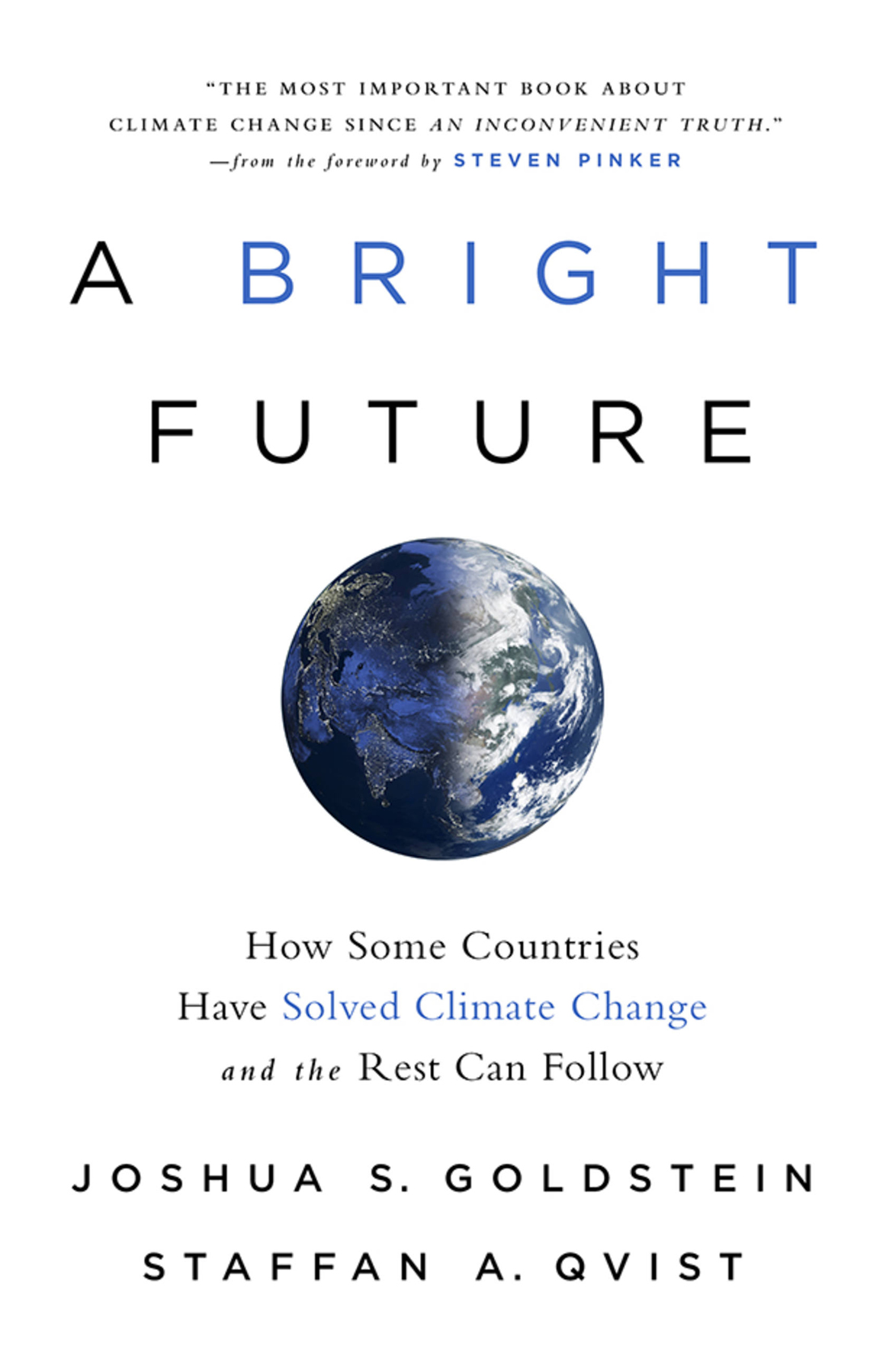Copyright 2019 by Joshua S. Goldstein and Staffan A. Qvist
Cover copyright 2019 Hachette Book Group, Inc.
Hachette Book Group supports the right to free expression and the value of copyright. The purpose of copyright is to encourage writers and artists to produce the creative works that enrich our culture.
The scanning, uploading, and distribution of this book without permission is a theft of the authors intellectual property. If you would like permission to use material from the book (other than for review purposes), please contact permissions@hbgusa.com. Thank you for your support of the authors rights.
Published by PublicAffairs, an imprint of Perseus Books, LLC, a subsidiary of Hachette Book Group, Inc. The PublicAffairs name and logo is a trademark of the Hachette Book Group.
The publisher is not responsible for websites (or their content) that are not owned by the publisher.
Steven Pinker is Johnstone Family Professor of Psychology at Harvard University and the author of ten books, most recently Enlightenment Now: The Case for Reason, Science, Humanism, and Progress.
F EW BOOKS CAN credibly claim to offer a way to save the world, but this one does. Climate change is the most pressing issue facing humanity today, and the major responses to itdenial on the Right, abandoning industrial capitalism on the Left, and installing solar panels and wind turbines in the centerwill not avert a possible catastrophe.
Joshua Goldstein and Staffan Qvist have written the first book on dealing with climate change that is grounded in reality. They have scrutinized the science and technology, done the math, surveyed the energy landscape around the world, and, most important, considered the political contextsince a technically feasible solution is pointless if no one will adopt it.
A Bright Future was not written by polarizing politicians or icons of environmentalism, and therein lies its strength. Surveys have shown that people resist accepting the reality of human-made climate change not because they are scientifically ignorant but because they associate the claim with the political Left and with communitarian and puritanical values regarding modern life with which they do not sympathize. And the traditional environmental movement has treated climate change like other environmental problems and advocated measures like conservation and small-scale energy generation that are not commensurate with the magnitude of the threat to human well-being.
Goldstein comes to the problem of climate change from his expertise in a different global-scale topic: international relations, including war and peace. The author of two prizewinning books on war and of the most popular textbook in his field, he is accustomed to thinking of existential threats and, crucially, how they have been tamed. (His discovery that war has declined in recent decades, presented in Winning the War on War, was a major inspiration for my own book The Better Angels of Our Nature: Why Violence Has Declined.) Qvist is a hardheaded expert on energy technologies around the world.
These two heavyweights have taken a fresh look at climate change, with no agenda other than to figure out how to solve the problem. They begin with some undeniable truths. Energy-hungry industrialization has been good for humanity, lifting people out of abject poverty and allowing them to live long, healthy, comfortable, and stimulating lives. Todays poor have a right to enjoy that progress in their turn. But the world now faces a crisis as its growing energy use, almost entirely with cheap and convenient fossil fuels, threatens disastrous consequences for the Earths climate.
Advances in policy and technology promise the possibility that we can have more energy with less pollutionbut will these changes kick in fast enough to win the race against a possible catastrophe? The advances would have to allow us to replace the foundation of the world economythe fossil fuels supplying 85 percent of its energywith new energy sources that do not emit carbon. This would have to happen at a breakneck pace, most of it by the middle of this century.
Humanity has never faced a problem like this, and the popular solutions are not up to the challenge. Like many right-thinking people, I have done my part to encourage small personal sacrificesfor example, by cheerfully posing for student-sponsored posters encouraging the Harvard community to unplug chargers and take shorter showers. But anyone who looks at the numbers knows that such feel-good measures will leave only the faintest scratch.
A Bright Future is climate change for grown-ups. Rather than starting from baby steps and hoping these add up, it starts from where we need to end up and asks how we can get there. The obvious lodestar should be the few countries that have gotten there, or very close: the ones that have rapidly switched from fossil fuels to clean energy without taking a vow of poverty. We know that their approach can succeed because it already has. Since energy is good and carbon emissions are bad, the number we should track is grams of carbon emitted per kilowatt-hour (kWh) of electricity generated. By that measure, Sweden, France, and Ontario come in at one-tenth the world average, a level that would solve our problem if all the other countries matched their performance. And needless to say, these places are not squalid poorhouses but among the most pleasant places to live on Earth. How can we learn from their success? This is the practical question answered in A Bright Future.
Among the myriad responses inspired by the threat of catastrophic climate change, the one that I encounter most often these days is a helpless (and potentially self-fulfilling) fatalism: the planet is cooked, and theres nothing we can do about it but mourn for our future and enjoy life while we can. A Bright Future offers a constructive alternative. Human ingenuity got us into our predicament, and human ingenuity can get us out of it. By showing how we can solve the problem, A Bright Future is the most important book on climate change since An Inconvenient Truth and the perfect book for our timeone that could, quite literally, save the world.
The task before humanity is to rapidly shift from CO2-emitting fossil fuels, which now provide 85 percent of the worlds growing energy needs, to clean energy.
I F YOU THINK climate change is a serious problem, we have bad news: its worse than you think.
We all see the graph of carbon pollutionemissions of carbon dioxide, CO2going up year by year and the graph of global temperature rising year by year. So its natural to feel that if we just stopped the rise in CO2 emissions, the temperature would also stop rising. Stopping the rise in emissions is within reach; its what the Paris Agreement would do if the United States rejoined it and every country in the world achieved its goals under the treaty. But that would not stop global warming.
Think about it: even if emissions stopped rising, we would still be putting CO2 into the atmosphere at todays high rate, and the concentration of atmospheric CO2 would keep going up. The CO2 concentration has already risen from about 280 parts per million (ppm) before industrialization to about 410 ppm currently. Since CO2 stays in the atmosphere for hundreds of years and nobody has yet invented a cheap and effective way to remove it, every ton we put into the air will stay there a long time.


